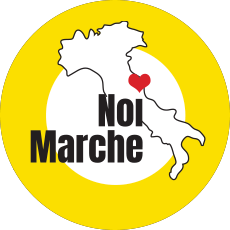The village
The city, at 342 meters above sea level, has its very well preserved historic center; it has an elongated structure that develops on a ridge of sandstone banks along which runs a main road axis, from which narrow and short streets branch down. Founded in the Middle Ages, it was called Montecchio. In 1790 the name of Treia was restored, derived from the ancient Trea, the name of a Roman center, destroyed in the barbarian period, which was located lower than the current settlement, near the church of the Holy Crucifix.
Strolling
The center of the town is the Piazza della Repubblica with its public and religious buildings: the Palazzo Comunale, with a beautiful portico, the result of the union of two palaces between the 16th and 17th centuries (note the different width of the arcades) also the Municipal Art Gallery in the Sala del Consiglio, in the Sala degli Stemmi and in the other rooms on the noble floor; the Church of San Filippo which preserves a crucifix perhaps from the 13th century and finally the building of the Georgian Academy, built by Giuseppe Valadier, where there is a very rich documentation of the activities of the Academy founded in the 1400s as the Accademia dei Sollevati. The square has an open side bordered by a balustrade from the end of the 1700s on which the 1785 monument to Pius VI rests. From this balustrade you will look out over a beautiful panorama towards the surrounding hilly landscape. The city also has a lovely Municipal Theater built between 1805 and 1817 and decorated with stuccoes and wooden paintings. The Duomo, dedicated to the SS. Annunziata, is from the nineteenth century, but the original construction, of which only the bell tower remains, dates back to the twelfth century. The Archaeological Civic Museum has been set up in the convent of the Church of San Francesco, which preserves notable finds documenting the various phases of the history of Treia, from the time of the Roman Trea. A walk along the walls, very well preserved, allows you to discover ancient towers and gates and enjoy unique views. Remarkable is what you can admire from the Torre dell’Onglavina, also known as San Marco, built on a high sandstone spur, towards the Sibillini Mountains up to the Abruzzo mountains. Just outside the center, there is the Sanctuary of the Most Holy Crucifix, built on the ancient Roman settlement of Trea. There are also some Roman remains embedded in the enclosure wall, at the base of the bell tower and at the entrance to the convent. The current sanctuary is due to Cesare Bazzani, an architect who worked a lot in the Macerata area during the Fascist period. Inside there is an important fifteenth-century wooden Crucifix of exquisite workmanship.













